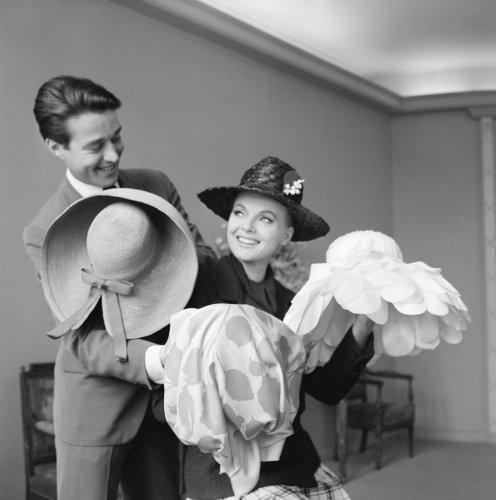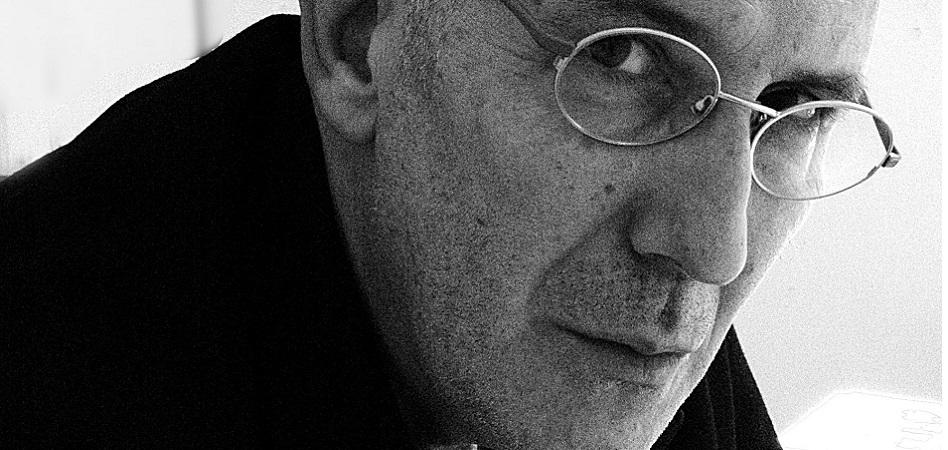Roy Halston: who was really the designer that everyone is talking about (and few knew)
Long before Tom Ford blew up the runway (and ad campaigns) with his ultra-sexy creations, there was a designer who added that touch of provocation and glamor to what was then sensible American fashion. We are talking about Roy Halston Frowick (1932-1990), better known as Halston, the first fashion designer who became a style guru and began to monopolize photos in the media.
Until then, fashion was reduced to fashion, but from then on it would also jump to coated paper and nightlife. As the Netflix series portrays, Halston was seen in the fashionable gambling dens, in the place to be par excellence of the moment; studio 54 by the hand of her friends Liza Minelli or Bianca Jagger. We always see the latter in that white Saint Laurent suit, right? Well, Halston's fashion was precisely a response to the elegance of Yves Saint Laurent. He was the American counterpart to that glamour; her halter necklines, her shirt dresses and her knitted dresses... her style would soon attract the attention of the stars.
The Beginnings
A hatter by training, Halston got his first break when the local Chicago newspaper featured his hats. Born in Iowa and educated just a few months at the University, he opened his own fashion store in the city but would soon move to the big city (New York) where he would start working at the famous Bergdorf & amp; Goodman. There he was also in charge of hats and soon he would have the most exclusive clientele. His first claim to fame would be the creation of the mythical pillbox model, simple and somewhat puffy, popularized by Jackie Kennedy and soon copied by thousands of women (today it is still the favorite of many socialites, see Cate Middleton).
In 1966, he would give another seemingly unimportant but crucial one; He designed many of the masks that were worn at the famous Truman Capote ball, where the crème de la crème of New York society met. The cat mask of a still unknown Candice Bergen or the cat-shaped one worn by Oscar de la Renta were his. The Iowa designer had managed to be present among the elite of the moment, but not only metaphorically through his designs, he himself was at the party, he had not been invited but managed to 'infiltrate'. He was already one more, he was already inside, and what the rest did not know was that he was the party.
Building an empire

In 1968, when he raised enough money to leave Begdorf & Goodman, he finally opened his own atelier, an eclectic and fantastic place where the creative and glam world met: Pat Cleveland, Marisa Berenson, Elsa Peretti... Anything could happen there. When you knocked on the door, you were greeted in a kind of safari floor with outlandish chairs and sofas where it was practically impossible to sit down, but the aesthetics were unmatched. The mix of social strata was total, what mattered was the creativity and authenticity of who participated there.
From that study came designs with pure lines, simple, sexy and still very American. It was the new proposal for that America that was boiling and evolving (women's rights, student movements, no war...) As in Europe, where even French fashion, so classic and elitist, had begun to regenerate and expand through boutiques around the world in a kind of democratization of fashion (ready-to-wear had arrived) Halston also did the same, opening its stores in the most luxurious corners and adding that sophisticated and sensual touch that was missing from the American locker room. The star piece? The ultrasuede shirtdress (a stretchy microfiber fabric) that you could wear from morning to night and would become one of the most iconic garments of the 70s.
But it wasn't just paving the way for sexy for Tom Ford or Calvin Klein. Long before the diversity discourse spread in fashion, he already showed appreciation for non-normative beauty and embraced the woman's body, whatever size it was. An example? One of his assistants, a size XXL that he dressed and that he claimed 'never been so favoured'. Or how he would always include racialized models in his catwalks, like a very young Imam who would catwalk for the spring time in his life with him, Alva Chinn or Pat Cleveland.
Provocation and controversy were also hallmarks of the house and sometimes, instead of parades to use, their fashion shows ended up becoming authentic talent shows, where fun was guaranteed. Roy Halston was a show, it was fun and for this he involved his entire team and gave them wings.
Female empowerment before we talked about female empowerment.
In that creative freedom his colleagues and friends also participated. Elsa Peretti, who would later be in charge of designing the bottle of her perfume and who openly acknowledged that "of course they took drugs, worked day and night" or her friend and lover Victor Hugo, an artist who would destroy a painting by her friend Andy as well. Warhol as part of his performance or entered the shop window to put his controversial stamp. One of those creative outbursts would cost him the anger of his assistant Ed, who designed the windows and with whom Halston had also had an affair. No doubt the phrase sex, drugs and rock & roll (replace with fashion) could very well have defined those years. The image that best sums it up? Bianca Jagger on the back of a white horse at the Studio 54 party that Halston was in charge of organizing.
The Beginning of the End
Like many self-made people, Roy Halston felt the need to be part of that elite, what they call Café Society, but competition between designers was not limited.
When he makes his presentations in Paris, he manages to put American fashion on the map and returns full of glory. But that glory takes away some of his idealism, now he is less bohemian, more neat, with an impeccable image and hair. His ascension had begun and it was no longer just about fun but about winning. He even changes his house and the way he pronounces his name.
The creation of a perfume, the design of kits and a licensing system in which the designer insists on personally reviewing everything that bears his name. Something that was impractical on a day-to-day basis and that ended up leading the designer and his team to a frenetic pace of work that they endured with alcohol and cocaine.
Halston wanted to conquer the world. He would even go to China, on a trip where he would take (and film) the entire crew and where he ended up becoming a kind of American ambassador. He was unstoppable.
But the licensing system was overflowing, its sales were not responding well and other designers came stomping. Halston did not want to be left behind and claimed that he intended to literally dress all of America so he partnered again, this time with JCPenney, in an attempt to reach all social classes. He considered that it was the natural step in the evolution of his career, he had already managed to be at the top in terms of his designs and now it was time to dress everyone and he really put all his effort into it. Begdorf and Goodman's reaction to this decision was to divest their fashion line, and this set off a chain reaction that would eventually take them off the chic and elegant fashion circuit of America. He lost control of his company and even his name could be used without even his consent. That name that even he had been in charge of pronouncing differently to make it as sophisticated as possible. A symbol of its rise and now, of its fall. He had lost control of what had cost him the most in life.
His health suffered as well. In 1988 he was diagnosed with AIDS and, already retired from fashion, he chose to live his last moments in California, alien to his old circles (he did not want anyone to see him sick) and close to his family. He died on May 26, 1990 leaving a very important inheritance (and perhaps not too appreciated until now) in the world of fashion. His unbridled life, his vision and creativity, his death and now the recently released Netflix series, have just strengthened his legend.









